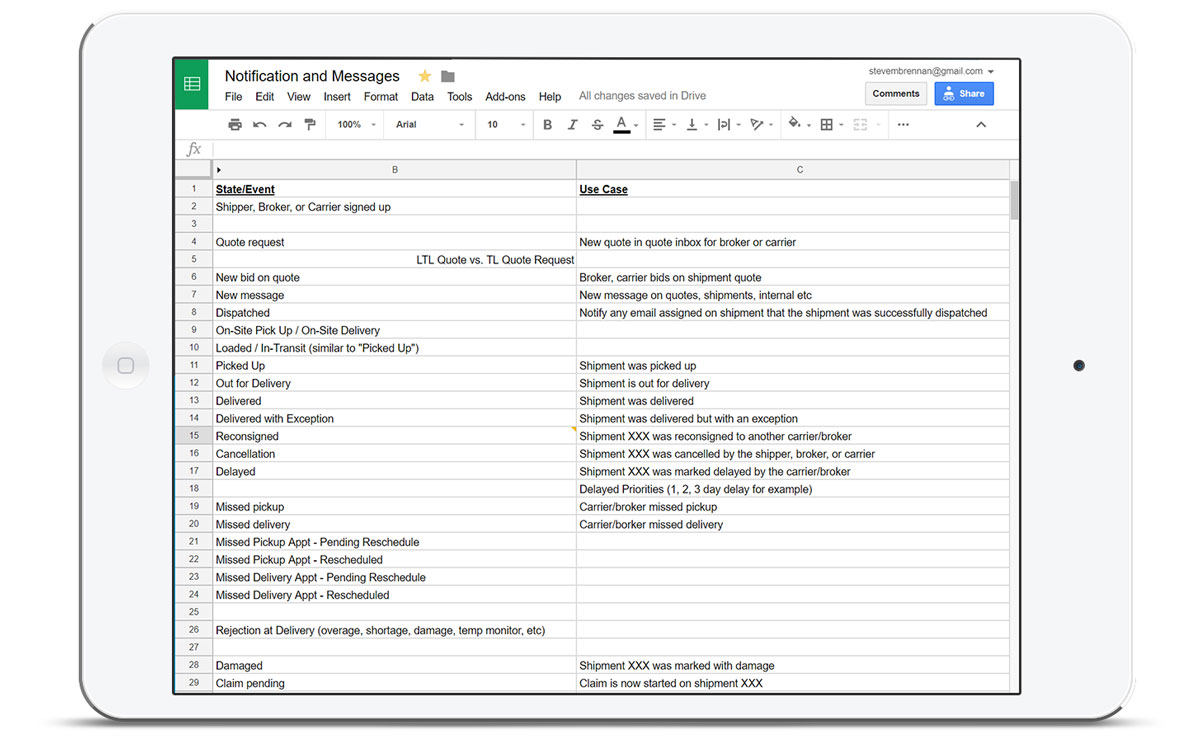Freight Shipping Platform
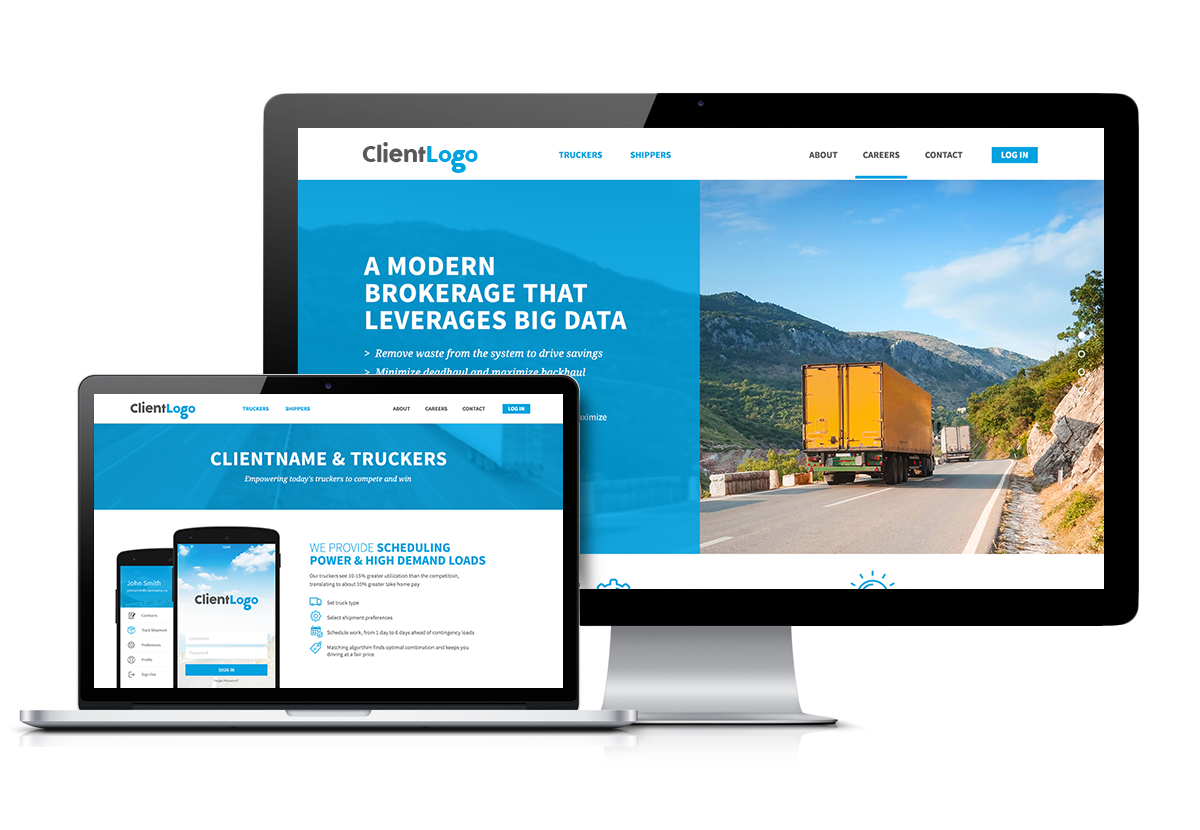
The Problem Statement
The current trucking industry is plagued by cumbersome manual processes and inaccurate quoting techniques. Operators often go without payment for weeks and face job instability.
We created a SaaS application for domestic ground shipping and fleet and cargo management services for freight trucking companies. User personas comprised of freight logistic operators, freight company owners as well as drivers. The experience focused on leveraging data modeling for more accurate pricing and logistics to book freight services, give operators and owners the ability to automatically monitor a shipment's progress and to ensure a more efficient payment system for all parties involved.
Initial product design efforts led to $10M in funding. I was the sole product designer handling product management tasks, all UX tasks and deliverables and worked in lock step with engineering.
Contributions
- UX strategy
- User stories
- Content strategy and microcopy
- System flows
- UI design
- User research
Personas
Truck Driver User
Using current apps and job boards, truckers found it difficult to find reliable leads and grow their business. They experienced lower utilization due to inefficient job linking and planning, specifically finding return jobs. Many voiced pain points around inconsistent timing on receiving payment upon job completion.
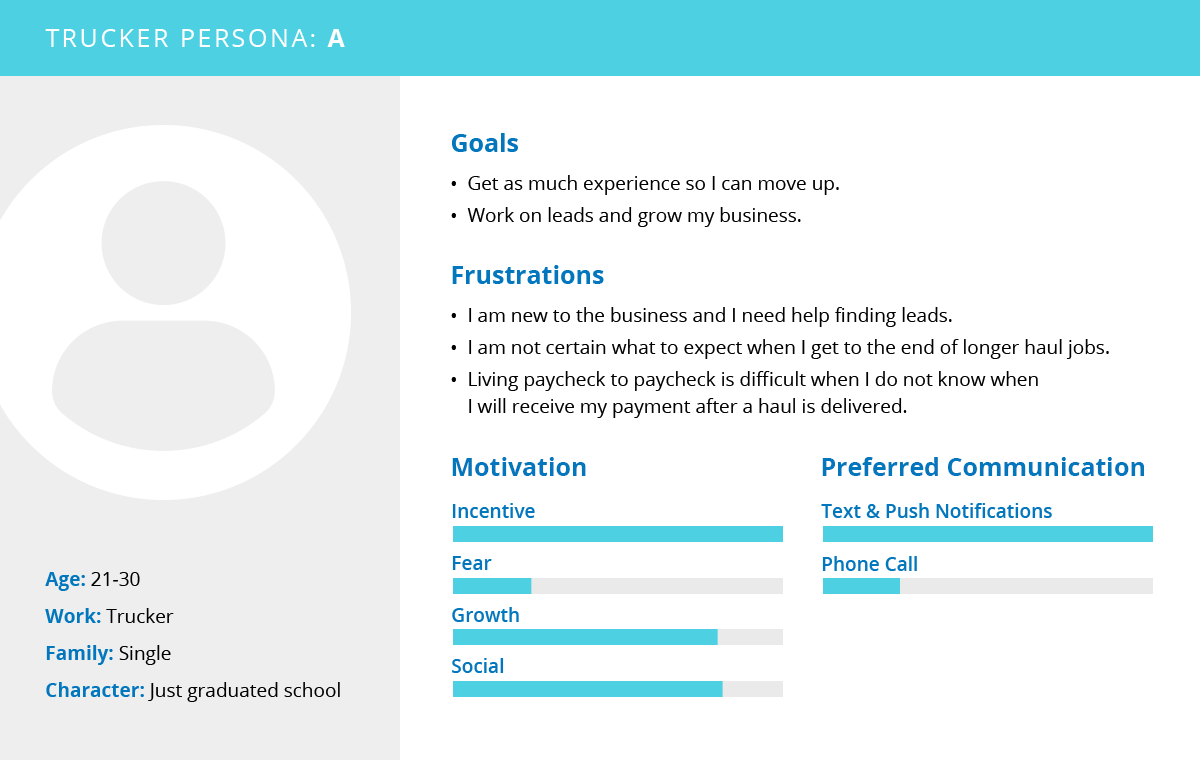
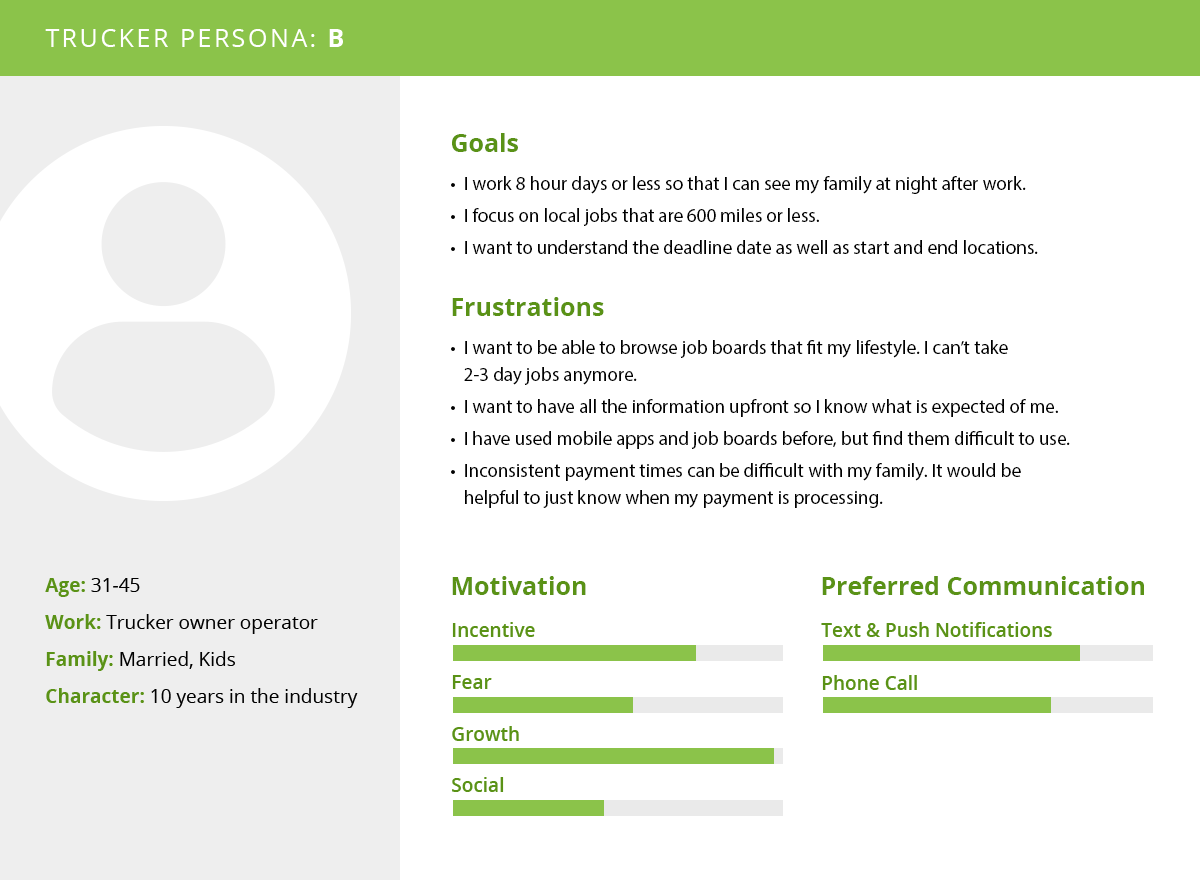
Shipper User
Shippers received a wide range of quoted prices for the same lane. There is a serious lack of accuracy which creates concern as to how the quotes are generated. The RFP process is handled manually which makes the bidding process cumbersome and tedious. RFP process ties up a lot of resources, it should be a more automated process.
Currently, major job milestones such as loading and drop off are handled manually, which makes it difficult to track shipments. Billing can be greatly improved between truckers, shippers and brokers - especially in how pricing is communicated.
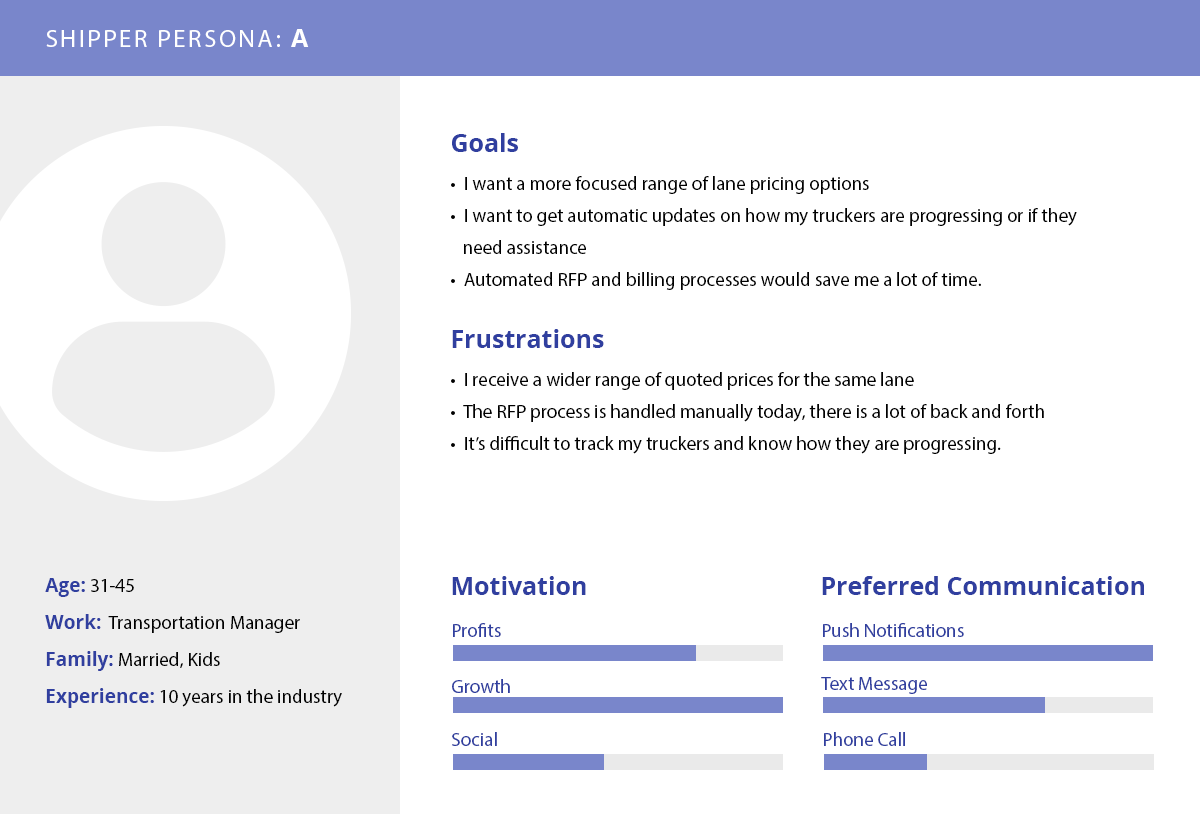
Discovery
Scoping User Stories
The core features are instant quoting and booking, real-time shipment tracking and more accurate pricing models than competitors. The following use case focuses on the owner operator users whom are responsible for sourcing jobs, pick up and drop off of goods, reporting progress and ensuring he/she has return trip jobs.
Core functionality was broken down into epic user stories. Each sprint consisted of stories for the trucker mobile app as well as the shipper desktop portal. Later in the process, I shifted the majority of my resources to the mobile experience while the portal developers worked on database design, data model integration and API support.
User Research - That "Aha!" Moment
Market Trends
Using market data on mobile OS trends, I validated that Android had a larger global market share, while iOS had a larger North American market share. To take this a step further, I needed to validate if this was also true for our user base.
The aggressive MVP schedule made it difficult to design and develop for both iOS and android simultaneously. I leveraged UXR interviews to confirm if one platform was preferred our users over another.
North America Mobile OS Share. Gray line is iOS, the orange line is Android. Images exported from gs.statcounter.com
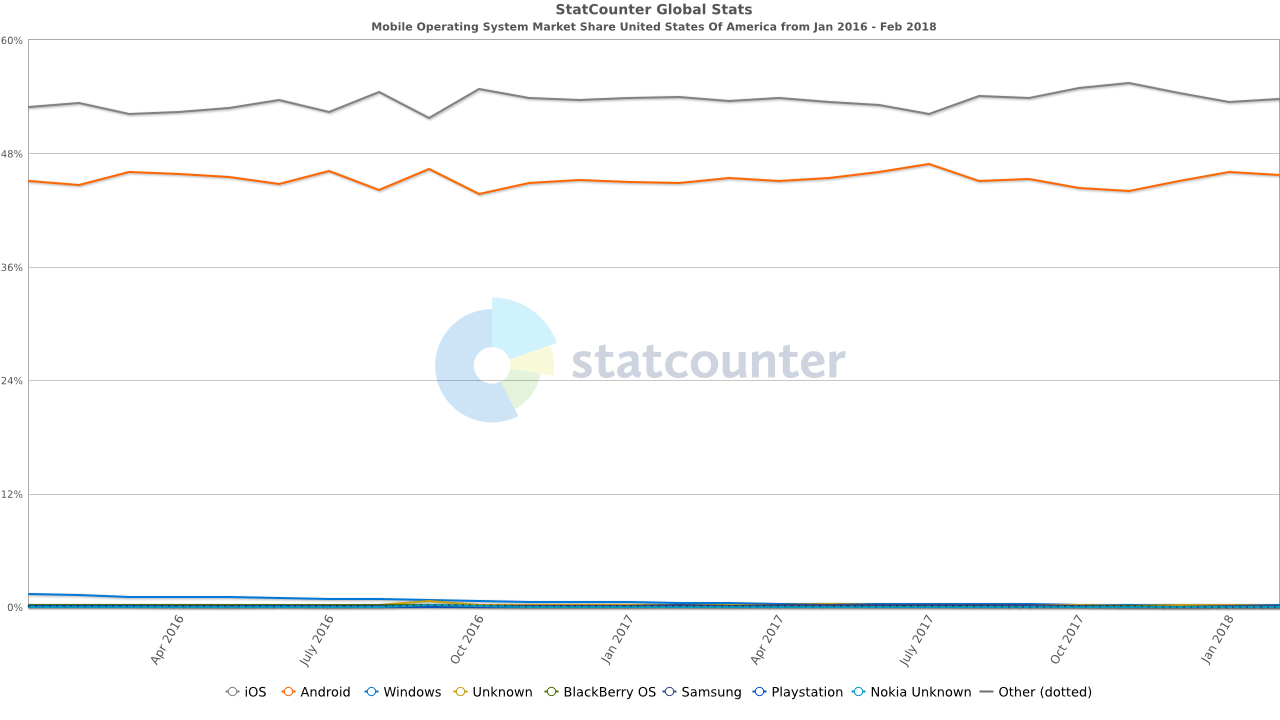
User Research
I wanted to learn more about drivers and owner operators so I went to a major truck stop with the goal to learn about their job, concerns and technology usage during their runs. Upon interviewing fifteen truck drivers at a tri state truck stop, it became clear that our users preferred Android devices. The interview candidates reported device cost as the number one driving factor. Upon presenting the findings to the team, we shifted resources into developing for android which enabled us to increase design quality and functionality. The UXR results empowered UX and engineering to implement core MVP features for immediate term and then scale to other devices in the future.
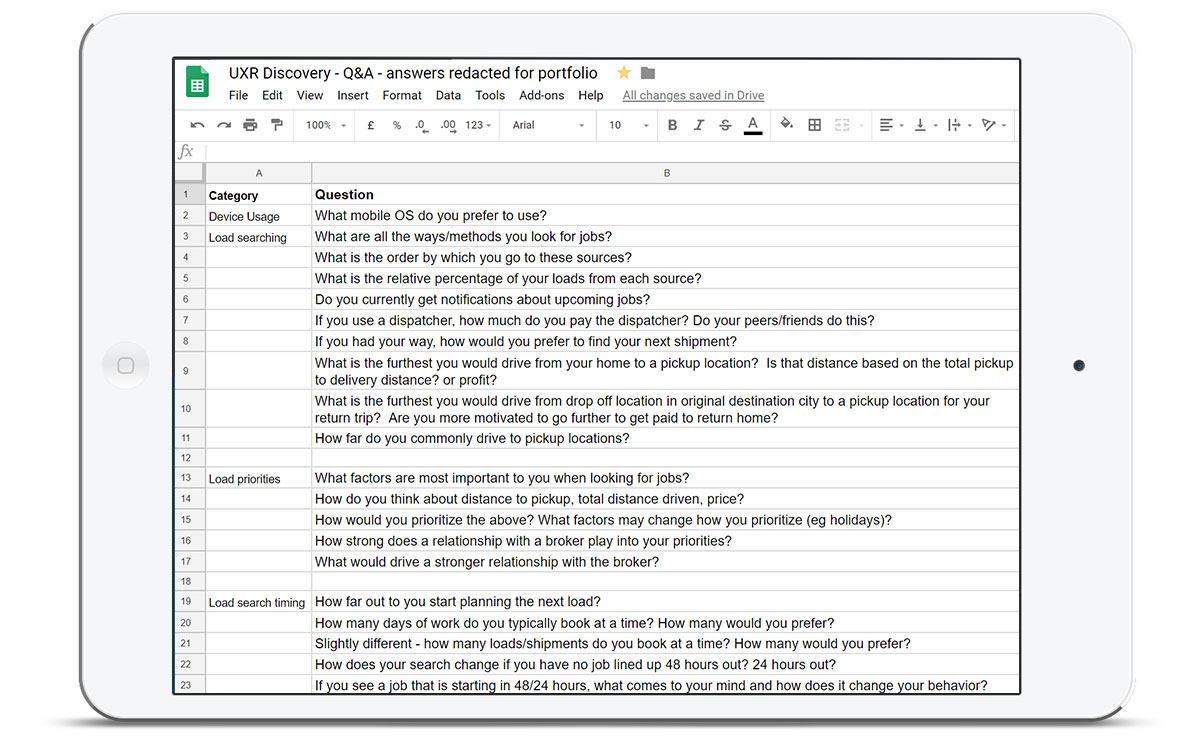
Design Strategy
System Flows
As everything was being done from scratch, I started with experience flows to align to a direction. Flows factored in both digital as well as analogue processes such as call center activity and SMS notifications. At this time, we were also working on content strategy and branding which impacted pitch decks, presentations as well as the company's website.
Cropped snapshot of a login flow condition
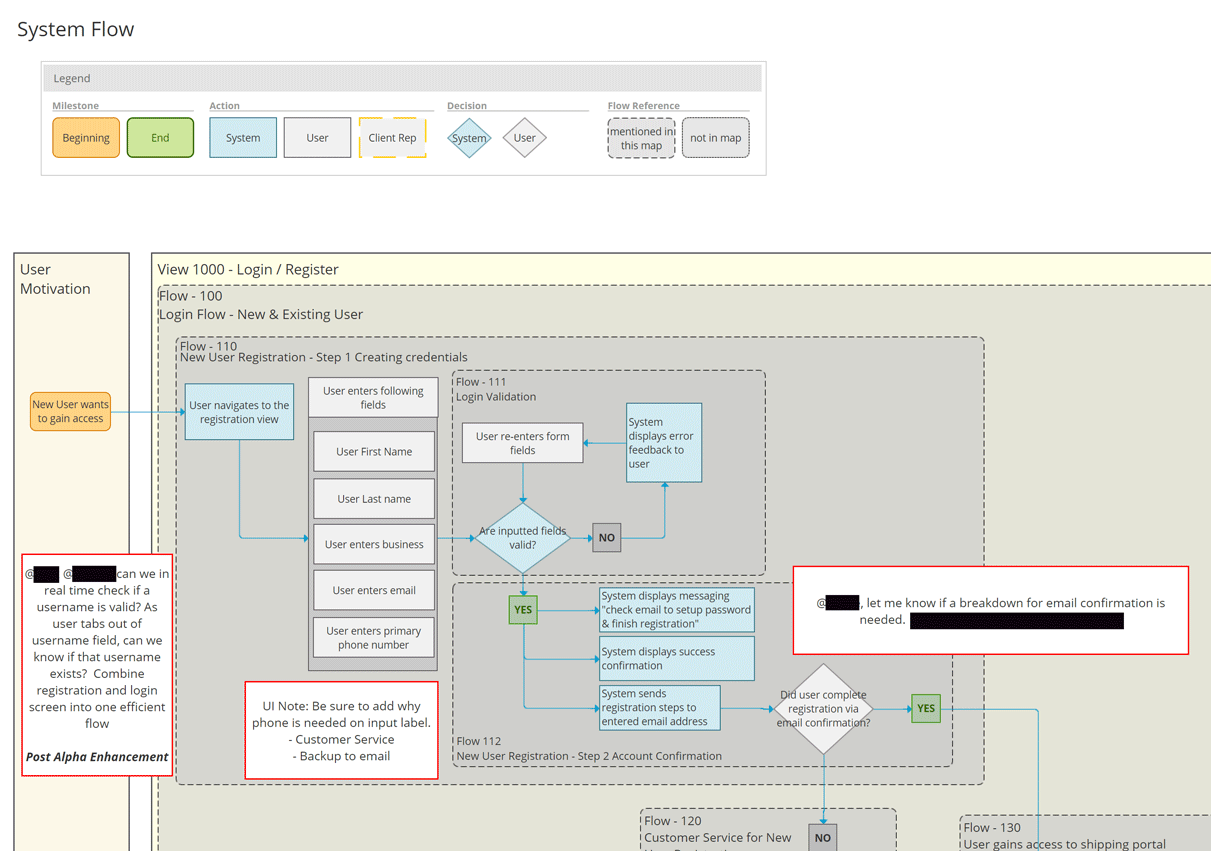
Cropped snapshot of displaying shipper user entered data
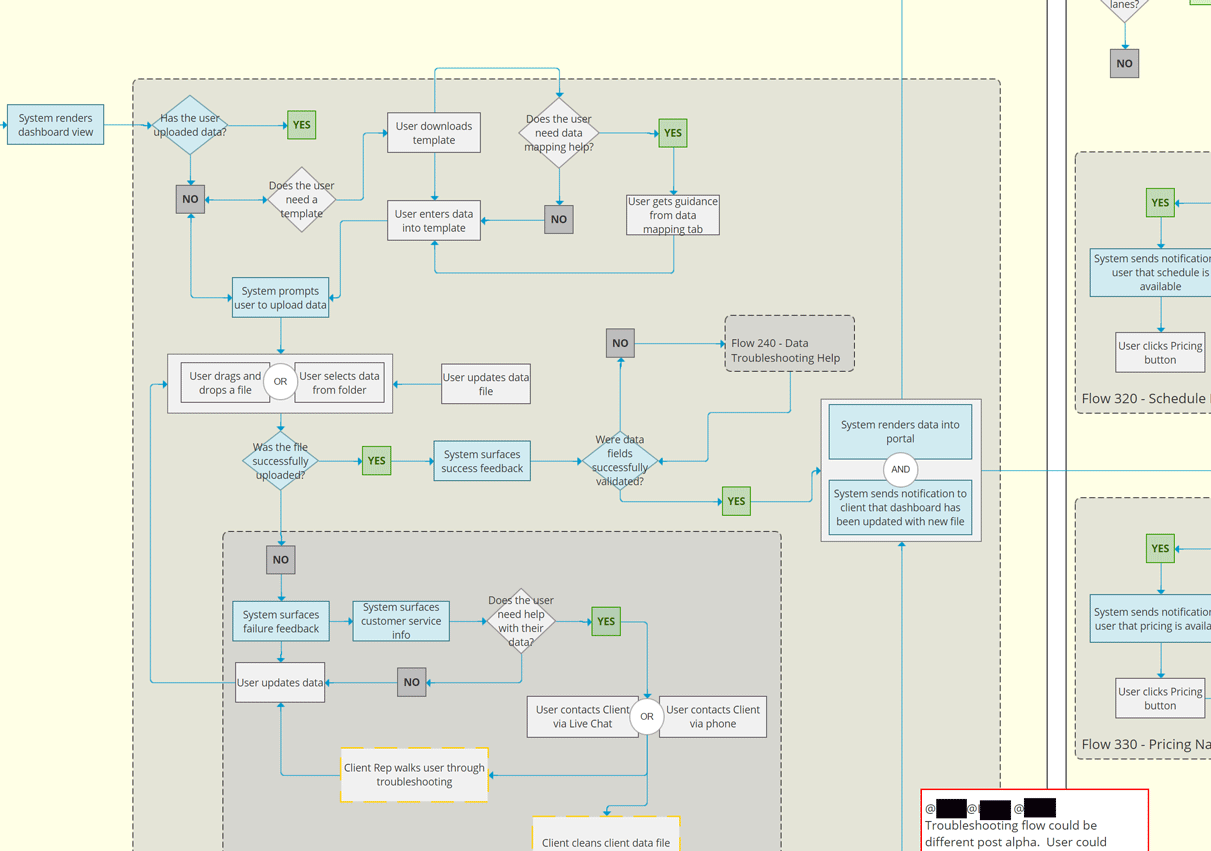
Wires
Low to medium fidelity wires were created to be modular to reduce rework and enable smoother artefact transitions. Functional spec content has been redacted from original wires.
Shipment job dashboard for truck driving user
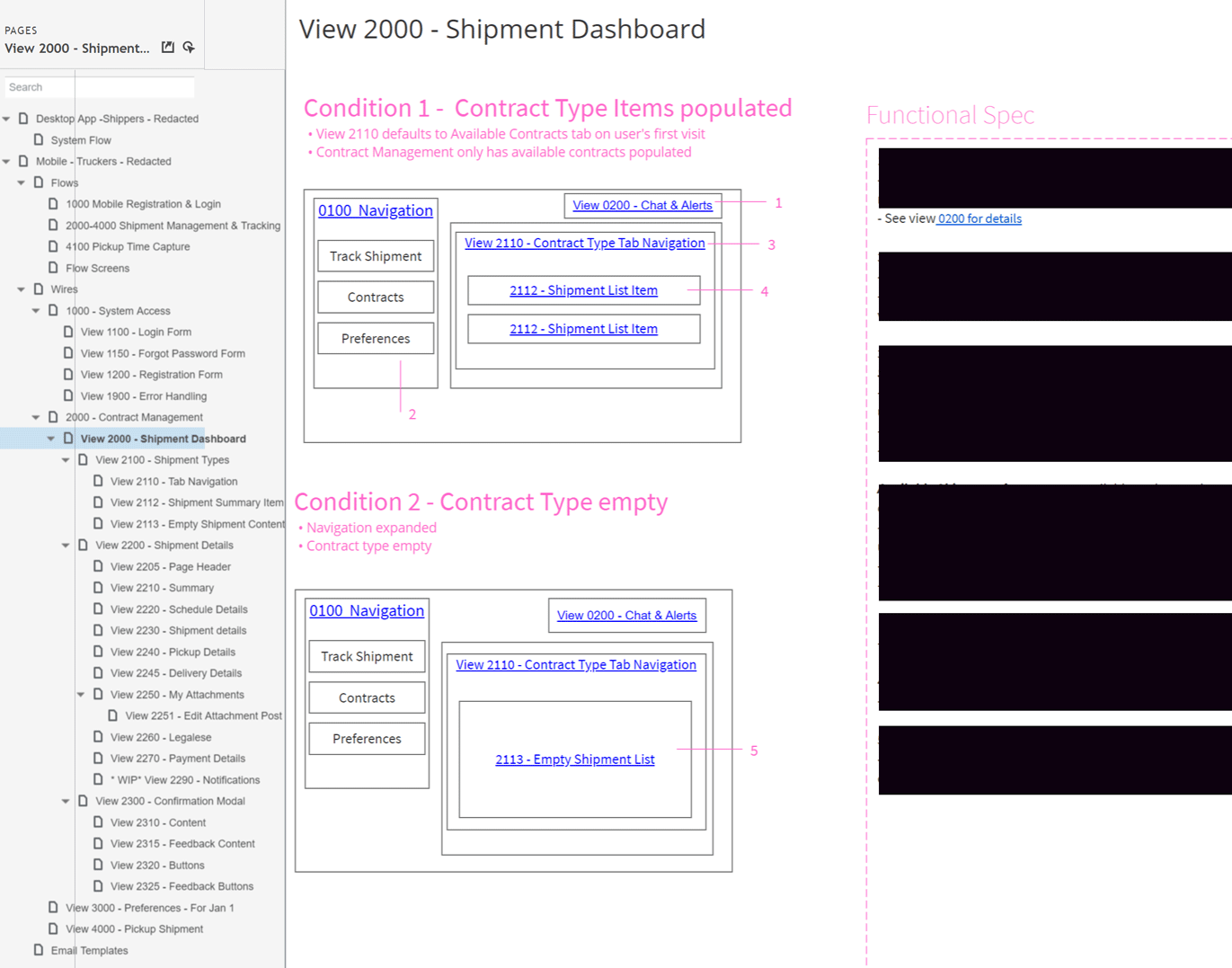
One of many shipment job details for truck driving user
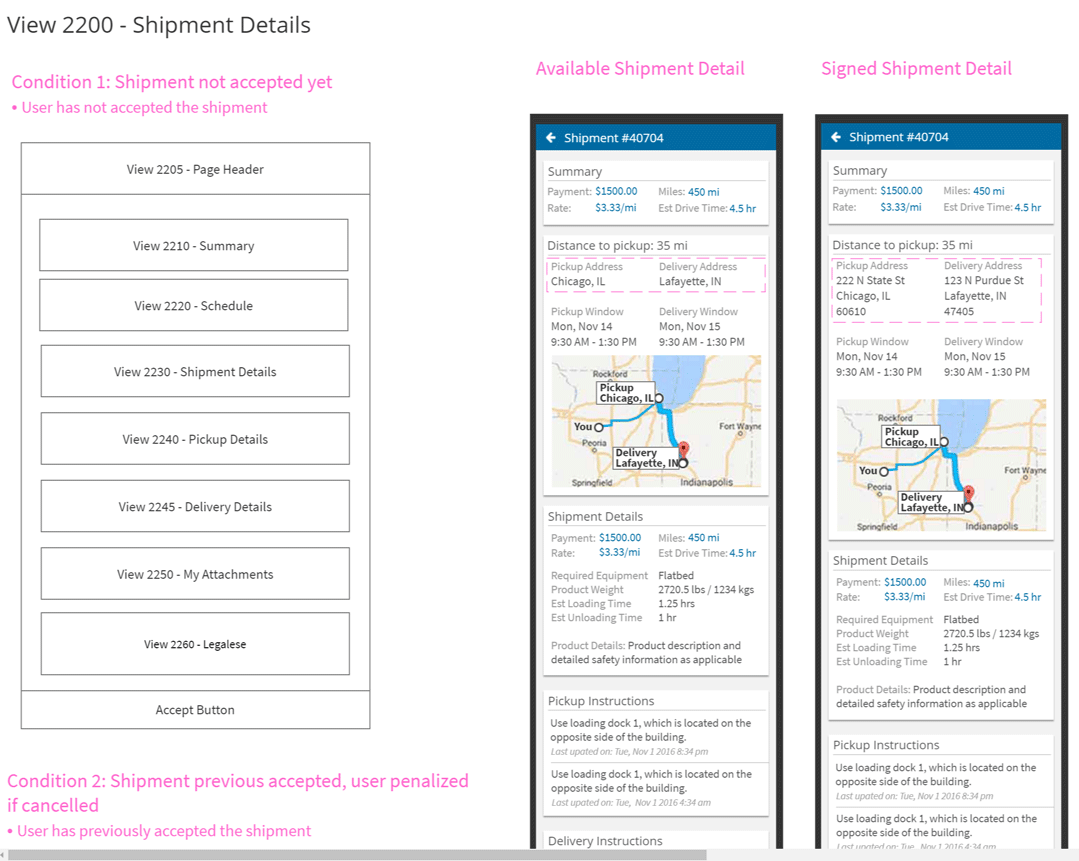
Mobile landing and contracts landing view
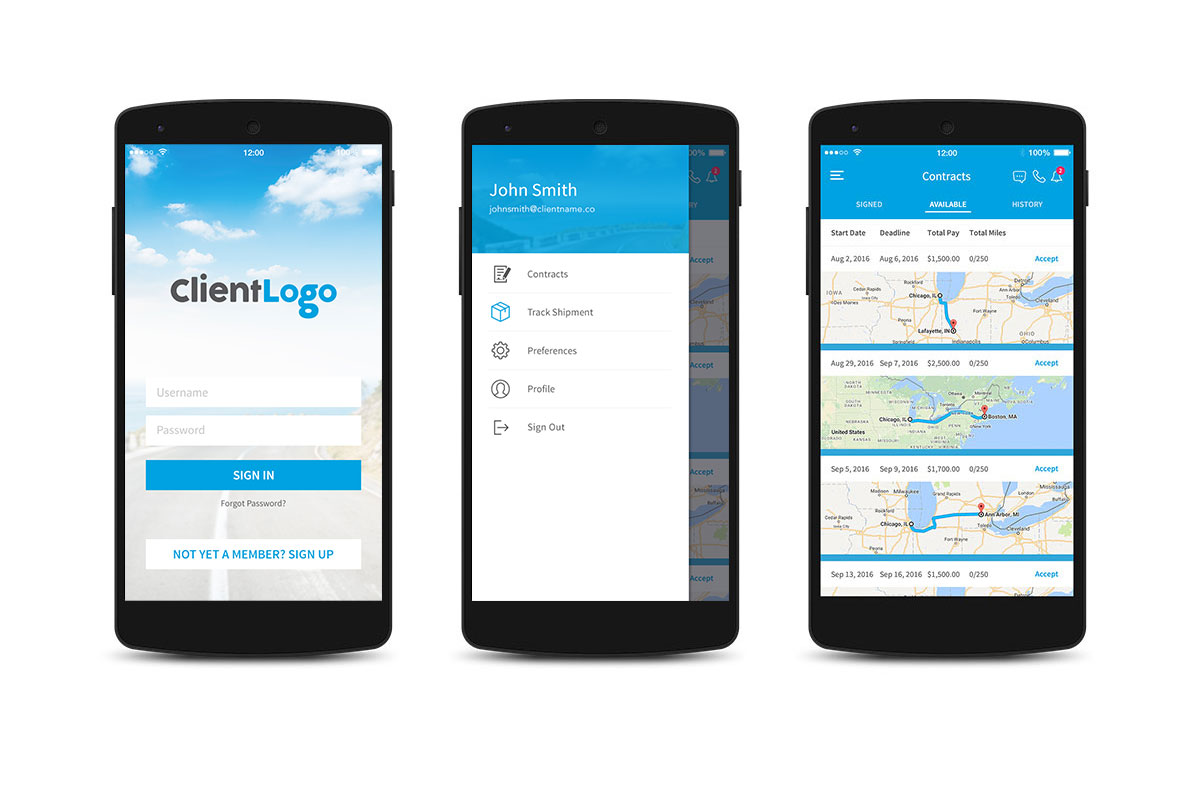
Feedback and Notifications
I created shared google drive projects to both disseminate information and create placeholders for known upcoming work. I heavily relied google sheets to define discoveries, requirements, competitive analysis and create user research test plans.
